Caffeine is a botanical pesticide, but it has been addicted to people on earth for thousands of years.

For professional baristas, please follow the coffee workshop (Wechat official account cafe_style)
Somewhere in the city, weary we looked at the work in hand, and a cup of warm coffee fell into our belly.
Coffee is sucked into your body along your intestines, your attention is gradually focused, and the excitement is slow to fade.
This magical experience makes us indulge in it day by day, and we don't drink when we are tired.
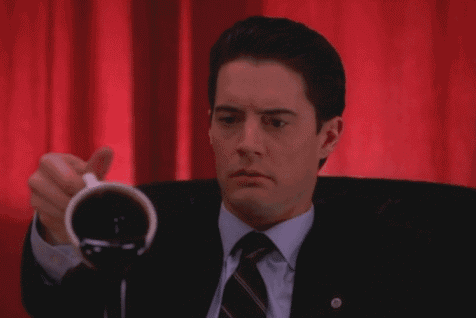
For us, the slightly bitter taste of coffee can always snatch time from drowsiness.
In fact, the caffeine contained in coffee is the most refreshing contributor.
As the most popular psychotropic drug, it not only has not been excluded, but also gathered a large number of people to become its supporters.
Coke, tea, coffee, medicine, chocolate, all kinds of energy drinks, an endless stream of products have long been brought into our lives.
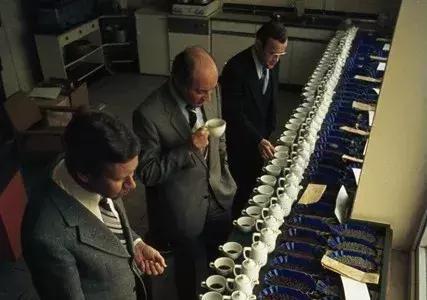
Try the coffee.
Tracing back to its origin, Shennong discovered tea from a leaf that fell into hot water.
At this time, Native Americans on the other side of the ocean also happened to use tea holly to make black holy water.
Several shepherds in Ethiopia in Africa are inadvertently energetic after eating coffee beans, which also arouses people's curiosity.
At about the same time, caffeine was made into drinks in all three continents of Asia, Africa and the United States.
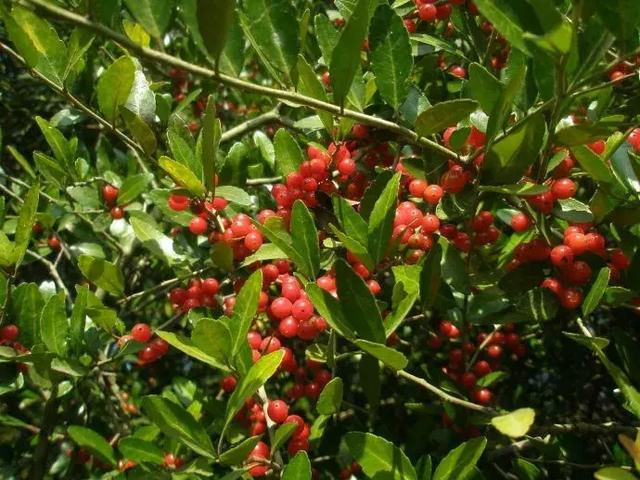
Substitute tea holly
The ancestors who did not know enough about nature were always full of doubts about these refreshing things.
But after 1819, scientists gradually unveiled the mystery of caffeine.
German chemist Runge first extracted pure caffeine from coffee beans, and then E.Fischer, also a German chemist, successfully synthesized caffeine.
With the vigorous development of modern medicine, people gradually understand the characteristics of alkaloids such as caffeine.
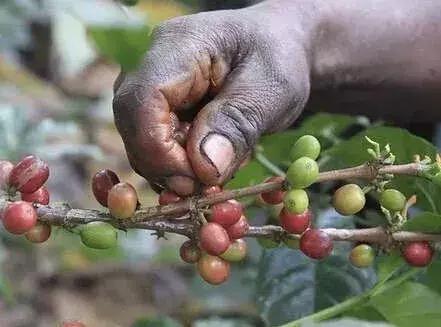
Coffee beans
It turns out that there are adenosine and adenosine receptors specifically responsible for feedback fatigue in the center of the human brain.
When the body is exhausted, it is only through the binding of adenosine to the adenosine receptor to send the body's message to the brain that the brain can feel tired and send signals that need sleep.
Thin caffeine can easily squeeze through the brain-blood barrier and covertly binds to adenosine receptors with a structure similar to adenosine.
After caffeine actively competes for the receptor, the signal of adenosine cannot be transmitted to the brain and can only be in a hurry.
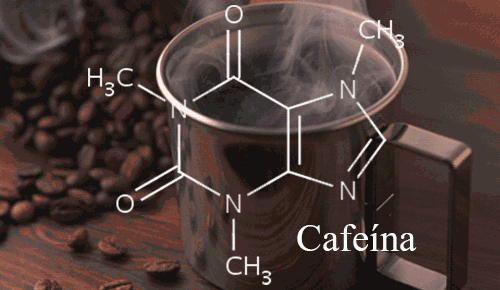
The molecular formula of caffeine
In addition, caffeine increases dopamine levels through more complex neural mechanisms.
When the brain is unable to sense drowsiness, the user will feel mental agility and excitement as the level of dopamine increases.
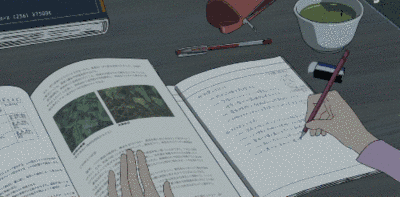
Other studies have shown that caffeine not only acts on nerves, it can also lower the threshold of endorphins and cortisol, thereby increasing endurance.
At the same time, it increases the conduction of nerve and muscle and changes the concentration of intracellular calcium to enhance the contractility of muscle fibers.
This helps to improve instant bursts or endurance, so many energy drinks are added with caffeine.
However, instantaneous improvement is not conducive to maintaining neuromuscular stability, and some exercises that require precision are not suitable for the use of caffeine.
* Note: endorphins relieve pain caused by fatigue, while cortisol promotes energy release.

Caffeine can also be used as a drug, it can tighten blood vessels in the brain, reduce blood flow in the brain, can be used as a "specific drug" to relieve headaches.
At the same time, it can also promote the synthesis and release of catecholamine *, so it can be used as a positive cardiovascular drug.
Even a small dose can produce positive psychological effects such as increased heart rate and high blood pressure.
Other studies have suggested that caffeine is good for the prevention of type 2 diabetes and Parkinson's disease.
* Note: catecholamines include norepinephrine (NAd), epinephrine (Ad) and dopamine (DA). The secretion of catecholamines can increase blood pressure and heart rate.
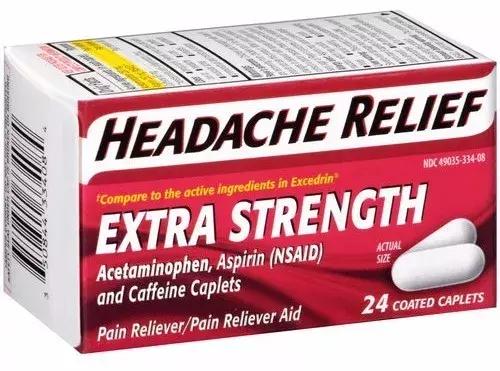
Caffeinated headache medicine
But why do plants produce so much caffeine?
Is it like fruit, in order to attract animal addiction to spread seeds for them?
In fact, caffeine is the plant's own secret weapon, with a variety of divine effects.
In order to drive away insects, some plants secrete caffeine to protect themselves.
Caffeine can cause anorexia after eating insects, and even die directly when the dose is high.
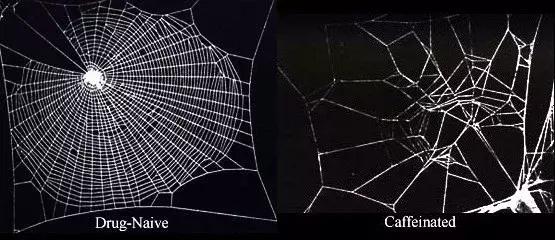
Poisoned by caffeine, spiders can't even weave a web.
Plants not only use caffeine to ward off pests, but also attract bees to pollinate them precisely.
Because caffeine can improve the long-term memory of bees to plants, which greatly increases the possibility of bees collecting honey back and forth from similar plants.
If caffeine leaves fall to the ground, caffeine entering the soil can also inhibit the growth of competing plants around them.
It is absolutely unexpected for plants to use caffeine as food.
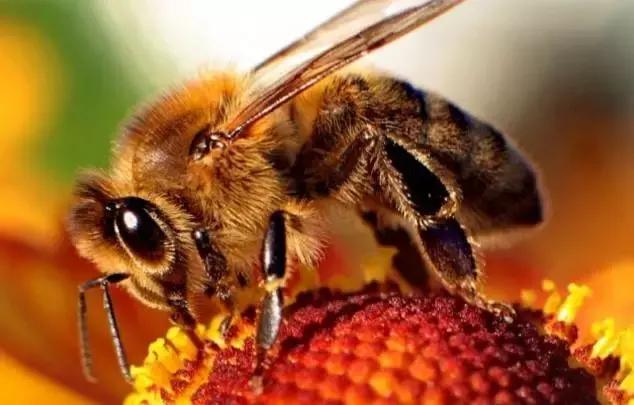
Of course, it is not only caffeine that suffers, but many alkaloids have such experiences, such as nicotine (nicotine) used as an insecticidal in farmland, ephedrine as a cold medicine, berberine in berberine, etc., all belong to the alkaloids brought into human society.
It can be said that alkaloids are no less important than penicillin.
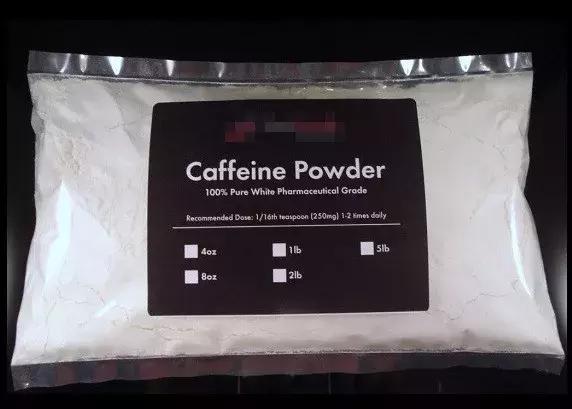
Pure caffeine is white, not black.
As an insecticide for plant self-protection, caffeine is certainly not made to help humans.
Caffeine, as a psychotropic drug, is inherently addictive, and when you try to quit it, you will feel withdrawal symptoms such as headaches, tiredness and irritability.
Although this is much better than the withdrawal response of drugs, many accidents are often due to ignoring these possible problems.

News of the day
At the end of 2015, Japan's NHK television reported a case in which a 20-year-old man died of caffeine poisoning.
The young man works at a gas station because he often turns day and night upside down. In order to refresh himself, he often uses energy drinks as daily drinks.
Perhaps the refreshing effect was not obvious enough, and he also took drugs containing caffeine, which eventually led to death due to excessive caffeine intake in a short period of time.

If you continue to maintain a large dose of mental state, it is not far from death.
Data show that the oral lethal dose of caffeine for adults is generally 10g, which is easy to achieve only when consuming pure products directly.
According to the average 500ml of coffee on the market contains 130~240mg caffeine (instant coffee will be relatively low), drinking 20 liters of coffee can reach a lethal dose, which is more likely to die.
However, according to the standard given by FDA, daily intake of 400mg is a safe dose. Exceeding the dose will lead to dependence and even addiction. Once discontinued, there will be symptoms such as mental fatigue and fatigue.
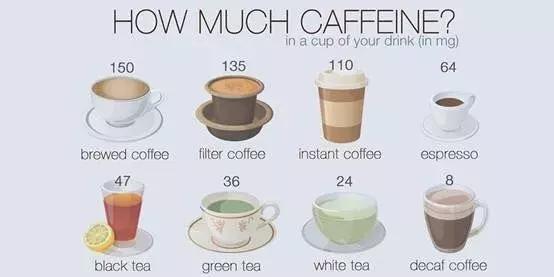
Caffeine content of coffee and tea, pay attention to the capacity
But it doesn't have to be a cautious lethal dose, because caffeine doesn't reawaken people's vitality, but prepares it for the future.
When many people feel sleepy, they will consider drinking coffee constantly in order to get rid of unpleasant microsleep phenomena such as eyelid fights.
Caffeine also lived up to expectations, inhibiting the binding of adenosine to adenosine receptors, but adenosine did not disappear.
Adenosine is waiting in line next to the adenosine receptor, and the body's fatigue is only obscured by caffeine. in fact, fatigue is still accumulating, and adenosine accumulation is increasing.
When the effect of caffeine is over, when a much larger amount of adenosine binds to adenosine receptors, you will feel extremely tired, which is called "caffeine collapse".
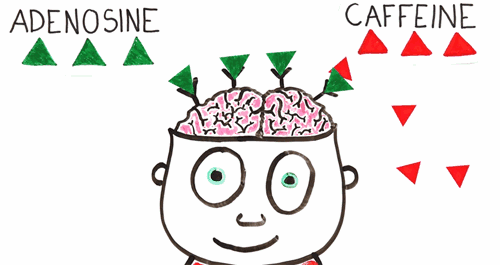
Moreover, the safe dose of 400mg may not be suitable for everyone.
Europeans and Americans have a long coffee culture, and their coffee tolerance is higher than that of Asians to some extent.
If your parents can drink two cups of coffee without changing their faces, it means that your tolerance will not be too poor.
But there are also some people who can't sleep all night with only a small cup, so the dose still varies from person to person.

While the risk of drinking coffee is bad, there is something worse: this "exuberance" may not be what you need.
Caffeine can effectively relieve attention deficit caused by lack of sleep, but it is only helpful for simple and boring overtime work.
Caffeine can no longer hide the lack of awareness of the risks caused by lack of sleep in jobs that require more judgment and thinking.
Serious cognitive bias will make the final work result unsatisfactory, and it will be no different from you to stick to it.

And after brushing the night, the metabolism of caffeine in the body will also affect the recovery sleep.
The time it takes to metabolize caffeine in the body is also affected by individual differences. In general, the half-life of caffeine in adults is about 5-6 hours.
Living habits can also affect the time of metabolism. Pregnant women and alcoholics metabolize more slowly, while smokers metabolize faster.
If the quality of sleep is often poor under the condition of incomplete metabolism in the body, and caffeine is still consumed to maintain the spirit, it will fall into a vicious circle.
* Note: it refers to the time in which half of the caffeine is metabolized.
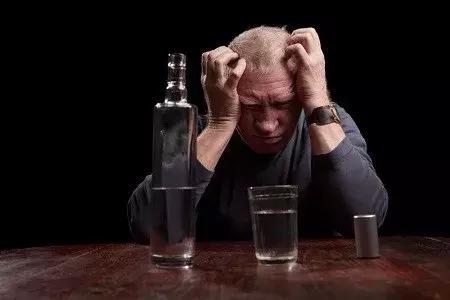
Data also show that the quality of restorative sleep may be affected even after the caffeine half-life.
So caffeine is not as useful as you think it is. If you have a choice, get some sleep.

As for caffeine, we don't have to talk about color change.
After all, caffeine has long been a beverage culture. Which one doesn't meet every day, such as energy drinks, cola, milk tea, coffee or tea?
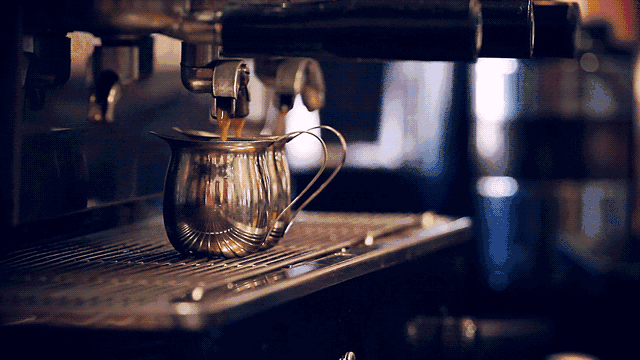
Which of the scientists and researchers who demonstrate the advantages and disadvantages of caffeine every day is not fighting day and night in the laboratory drinking coffee?
On the contrary, we watch the news reports all day long, but we never care about the dose.
* reference materials
McHill, A. W., Smith, B. J., & Wright, K. P.. Effects of caffeine on skin and core temperatures, alertness, and recovery sleep during circadian misalignment. Journal of biological rhythms, 2014. 29 (2), 131-143.
Zhai Jinxiao, Cui Wen, Zhu Jun. Research progress on poisoning, detection and application of caffeine [J]. China Judicial expertise, 2017, (05): 30-35.
Li Haixia, Chen Rong, Zhou Dan, Wu Liang. Research progress on the synthesis and pharmacological effects of caffeine [J]. West China Journal of Pharmacy, 2011 Journal of Pharmacy 26 (02): 182-187.
Yi Chaoran, Wei Zhongqing. Pharmacological action and application of caffeine [J]. Journal of Medical postgraduates, 2005, (03): 270272.
Important Notice :
前街咖啡 FrontStreet Coffee has moved to new addredd:
FrontStreet Coffee Address: 315,Donghua East Road,GuangZhou
Tel:020 38364473
- Prev

Dunkin' Donuts is considering changing its name, but "doughnuts will always be sold."
Professional baristas follow the coffee workshop (Wechat official account cafe_style) American doughnut brand Dunkin Donuts is considering giving up the second half of the brand name, but the delicious doughnut will not disappear from the menu. Dunkin Donuts CEO Travis said on the 26th that the brand chain hopes to maintain the first place in the doughnut retail industry, and our
- Next

Hong Kong people are fascinated by the "tailor-made" 24-hour operation of a cafe on Ludao.
For the exchange of professional baristas, please follow the coffee workshop (Wechat official account cafe_style) "tasting" food transmission, human communication, entrepreneurship and innovation between Fujian and Hong Kong, the owner of the "tasting" cafe at the BRTDou West intersection Station in Xiamen, Fujian Province. He is a Hong Kong resident who knows coffee and has a little knowledge of art. Leo, he makes this place "faint in the city" with "its own flavor".
Related
- What ratio of water temperature and ground does the smart cup method use to press coffee? The difference between brewed coffee and filtered coffee?
- What is the standard process for the purpose of coffee cup testing? What is the difference between hand-brewed coffee and cup testing?
- How to use hand-brewed coffee paragon small golden balls? How does cold coffee lock in the aroma of coffee?
- Is American coffee black? What is the difference between American coffee and drip coffee?
- Unexpected! Well-known tea beverage brand Lele Tea will withdraw from the Zhengzhou market!
- Starbucks enters the fashion and beauty industry?! Netizen: Give me an ice American eye cream
- Why can American refills for free? The difference between Americano and American drip pot coffee
- Being chased out of the rain in front of Starbucks?! Store: Sheltering from rain under umbrellas poses a safety hazard
- The white moonlight has changed?! Lucky launches "Big Winter Pear American"
- Hand-brewed coffee three-stage method, high-sweet and universal brewing method to share! What does the high sweet water level of hand-brewed coffee mean?

